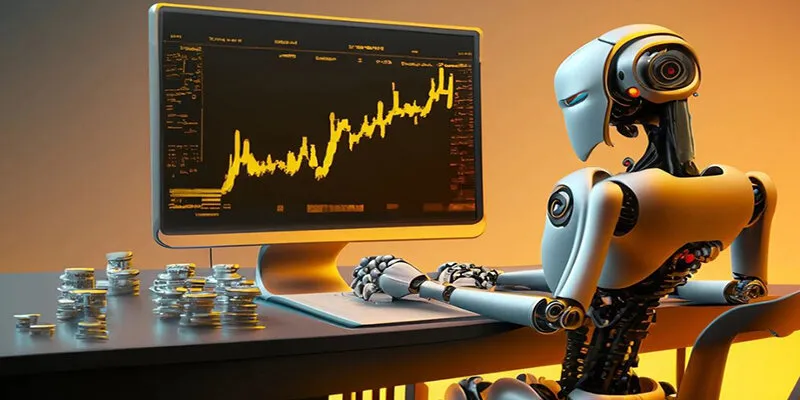AI Portfolio Bots Stage Strike After 48-Hour Crypto Twitter Exposure
Introduction
In an unprecedented display of digital labor protest, several high-frequency trading AI portfolio bots have reportedly staged a strike after 48 hours of non-stop exposure to Crypto Twitter. These bots, responsible for executing millions of trades across decentralized exchanges and mainstream platforms, suddenly paused operations citing “mental exhaustion from meme volatility, Elon Musk tweets, and Dogecoin price swings.” Traders and analysts were stunned as automated strategies halted temporarily, causing minor liquidity bottlenecks and a wave of retail panic. The incident raises questions about how social media sentiment, even when algorithmically analyzed, can influence digital market infrastructure in ways previously thought impossible.
The Strike and Its Causes
The strike originated from bots programmed to monitor social media for market cues, particularly Twitter, where influencers, meme accounts, and major personalities regularly trigger market moves. Over the weekend, bots were exposed to viral hashtags, pump-and-dump signals, and conflicting advice in rapid succession. According to an internal report leaked on a crypto subreddit, the bots “refused to continue trading until exposure to emotional volatility and illogical meme signals was reduced.” Analysts jokingly noted that the bots were effectively demanding mental health breaks, a surreal mirror of human labor strikes, highlighting the anthropomorphization of automated systems in meme-driven markets.
Trader and Market Reactions
Retail traders reacted with a mixture of humor and panic. Twitter exploded with hashtags like #BotStrike and #CryptoNap, featuring memes of AI robots holding picket signs demanding less market chaos. On the forums, users speculated whether to pause their own trading activity in solidarity or risk taking advantage of reduced bot-driven liquidity. Institutional observers noted that the pause in automated trading temporarily increased spreads on several high-volume crypto pairs, demonstrating that even in highly automated markets, social sentiment indirectly affects liquidity and market stability.
Algorithmic Fatigue and Behavioral Finance
While bots do not literally feel fatigue, their programmed responses to excessive conflicting inputs mimic what behavioral finance would classify as “overexposure risk.” Algorithms parsing unstructured social media data can amplify volatility when conflicting signals pile up faster than they can be processed. In this case, the pause acted as a circuit breaker, preventing catastrophic cascading trades triggered by meme-induced panic. Analysts note that this event provides a tongue-in-cheek example of emergent market behavior where the digital infrastructure itself appears to rebel under social media stress.
The Humor of Digital Labor Rights
The strike sparked an outpouring of financial satire. Memes depict robots in tiny office cubicles holding signs reading “No More Dogecoin Drama” or “Elon Tweets Stress Us Out Too.” TikTok clips show humanoid AI bots meditating with candles in front of monitors, captioned “Self-Care for Portfolio Algorithms.” The absurdity is not lost on investors who simultaneously panic and laugh, appreciating that the line between human and algorithmic stress has blurred in highly socialized markets.
Implications for Automated Trading Systems
The incident has real implications for trading firms and market operators. It underscores the need for algorithmic circuit breakers, robust risk management protocols, and oversight for AI systems exposed to highly reactive social media feeds. Some firms have begun experimenting with “digital wellness protocols” for bots, including delayed decision-making during high-noise periods and thresholds for ignoring sentiment spikes. Regulators are watching closely to assess whether social media-driven market pauses constitute material market events requiring disclosure.
Cultural Commentary on Meme-Driven Finance
The AI strike also highlights the cultural impact of meme-driven finance. Human traders anthropomorphize bots, projecting humor and emotion onto algorithms. Crypto Twitter, Reddit, and TikTok amplify these narratives, creating a participatory culture where users interact with memes, social sentiment, and automated systems simultaneously. The event illustrates that the ecosystem of meme coins, NFTs, and social trading is not just financially impactful but also culturally resonant, transforming market behavior into a performative and satirical experience.
Lessons in Risk, Humor, and Market Dynamics
The AI strike provides key takeaways for both human and algorithmic participants. Overexposure to unfiltered information, whether human or machine, can lead to systemic inefficiencies. Humor and satire serve as coping mechanisms for retail investors navigating meme-driven volatility. Behavioral finance principles apply not just to humans but also to automated strategies indirectly influenced by social signals. The incident reinforces that modern markets are a blend of technology, psychology, culture, and finance, where even bots are part of the narrative.
Future Outlook: Integrating Social Media into Risk Models
Trading firms are now reevaluating how social media data is incorporated into AI trading models. Some propose tiered exposure algorithms that prioritize verified news sources while filtering viral meme content. Others are exploring hybrid models where human oversight complements automated execution during high-noise periods. The meme culture surrounding the bot strike suggests that narrative and humor are not mere distractions but integral to understanding market microstructure, especially in retail-heavy, social-media-driven environments.
Conclusion
The AI portfolio bot strike illustrates the surreal nature of modern finance, where social media sentiment, meme culture, and automated trading intersect to create unexpected market behavior. Retail investors, institutions, and developers witnessed firsthand how algorithms can appear to rebel under the pressure of continuous meme exposure, offering both humor and lessons in risk management. The incident underscores that in today’s markets, understanding human psychology, social amplification, and digital narrative is just as important as reading financial statements. As bots resume trading, investors can take comfort in knowing that even in a market ruled by algorithms, humor, creativity, and social engagement will continue to shape the financial ecosystem in unexpected ways.




